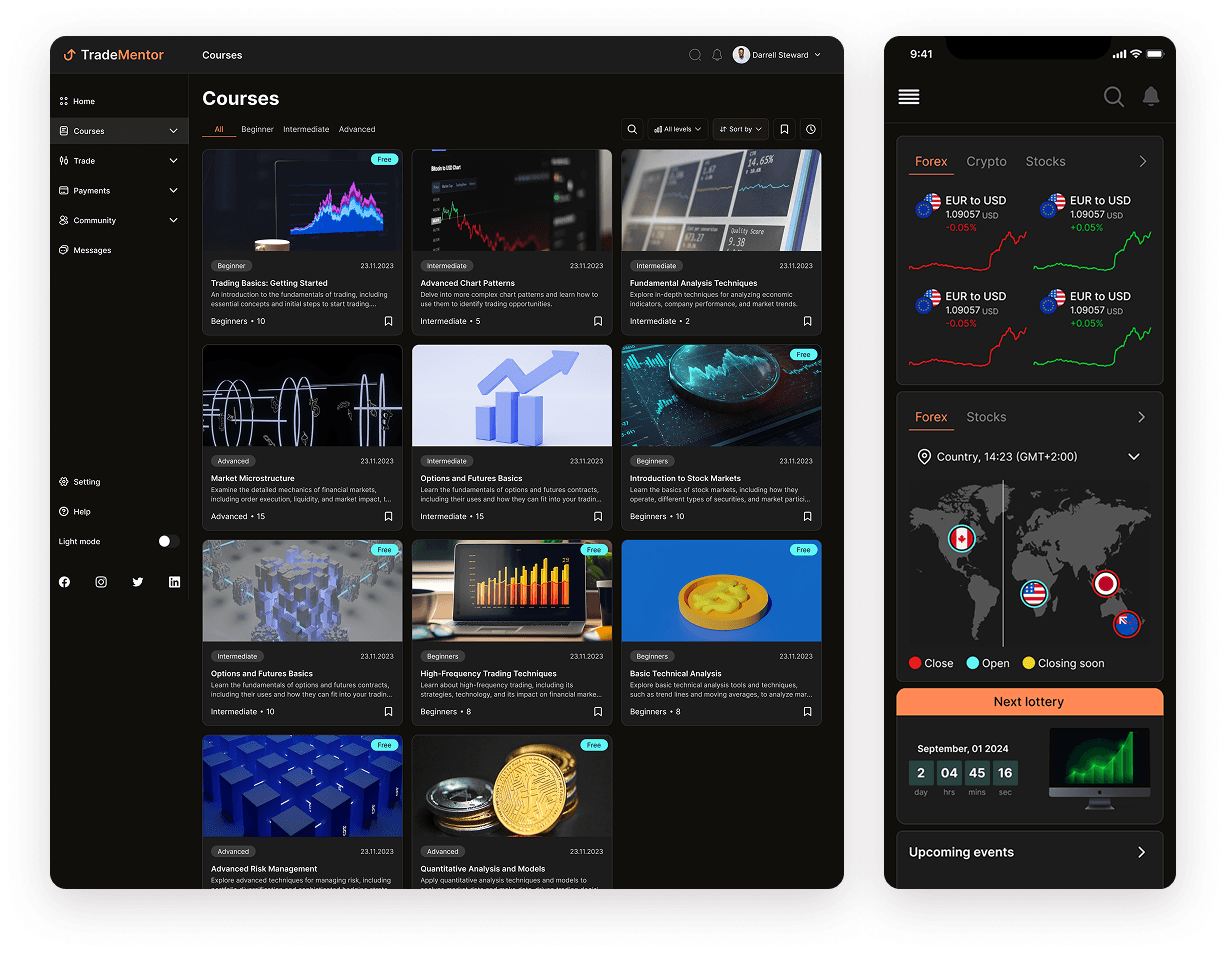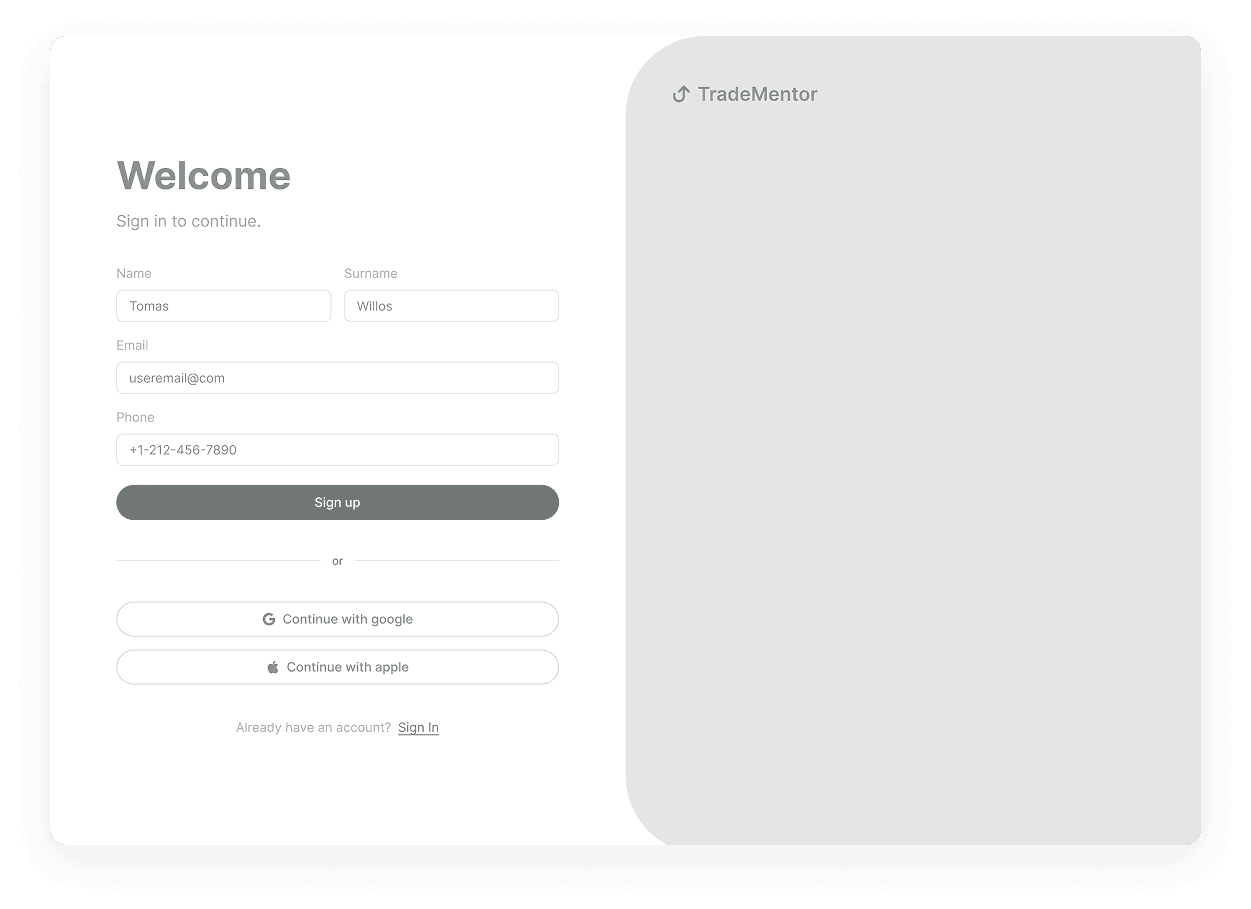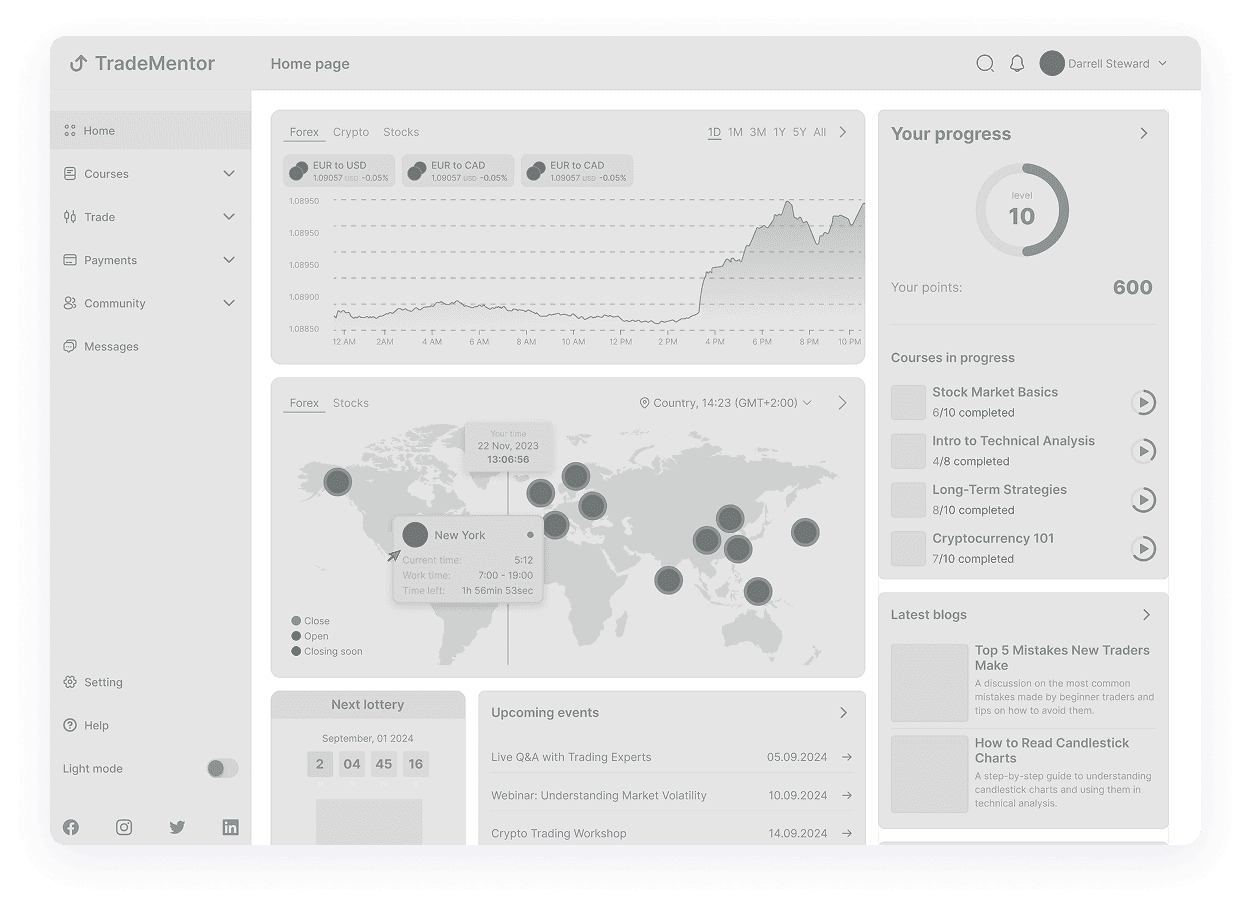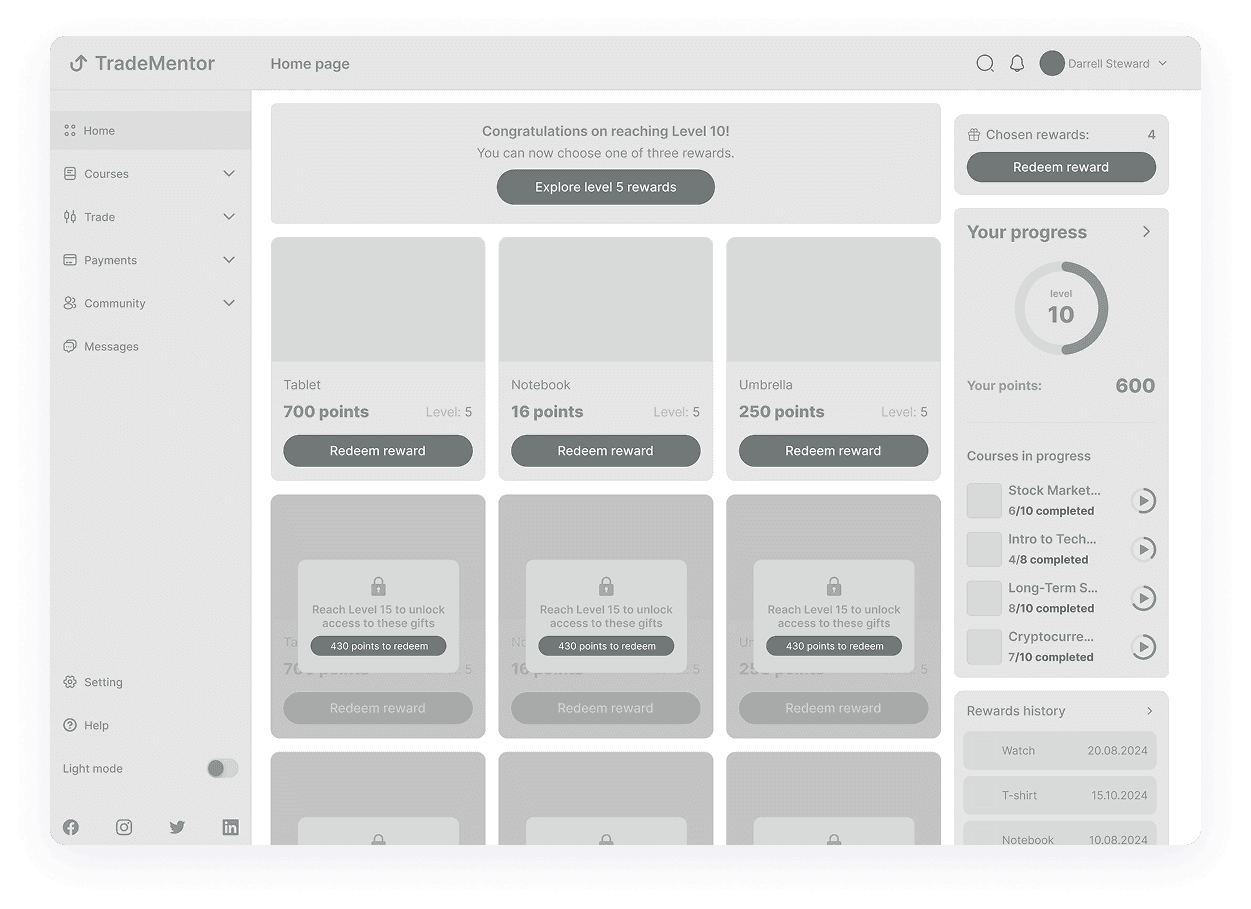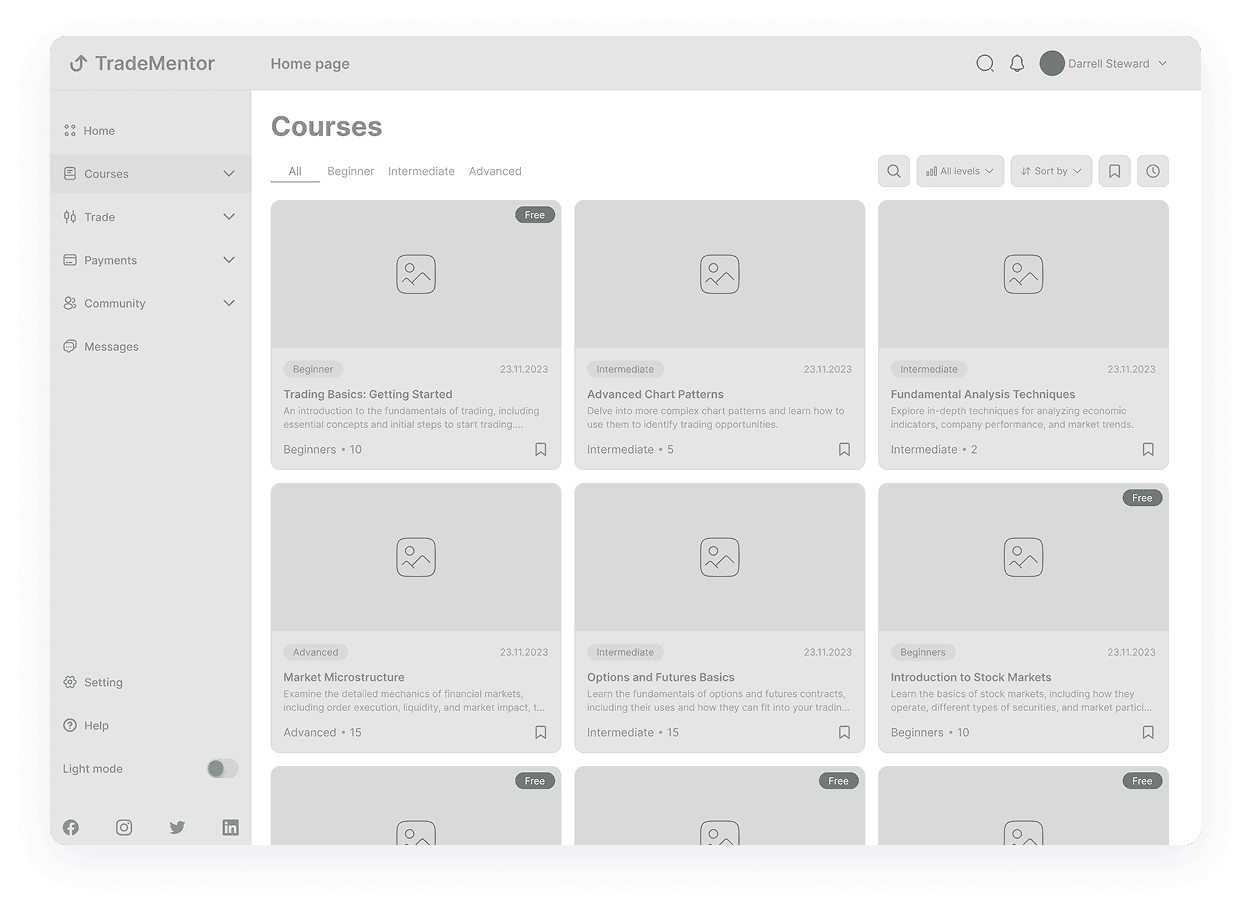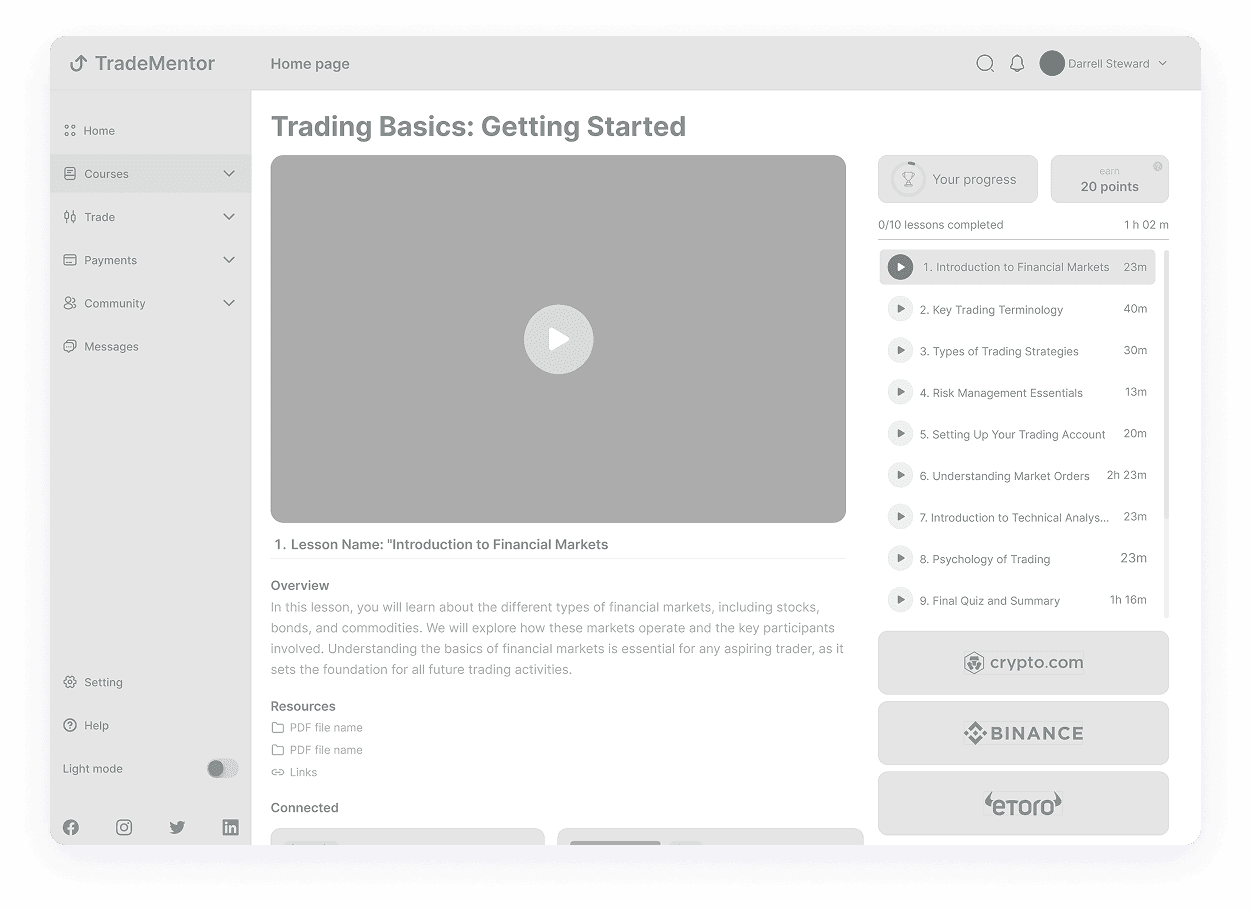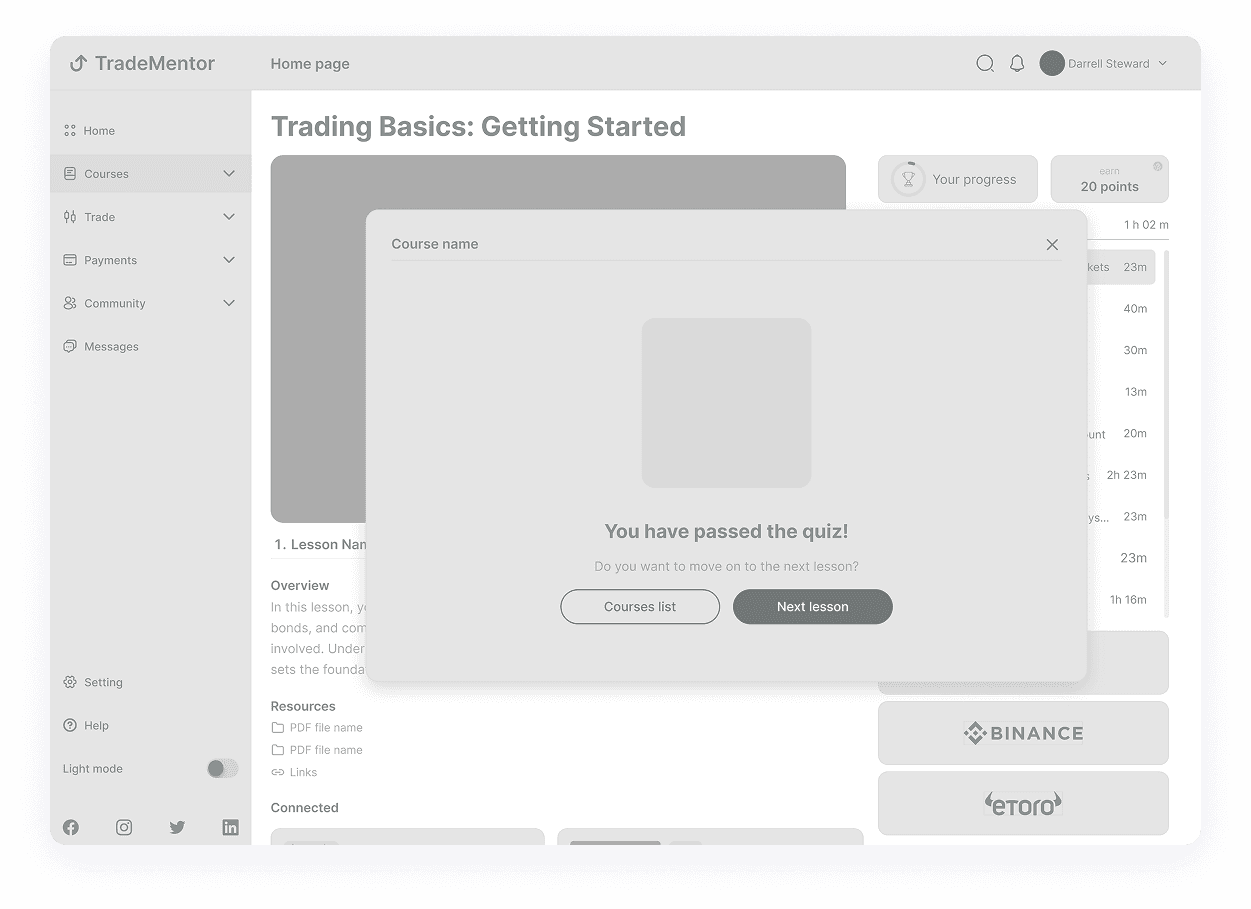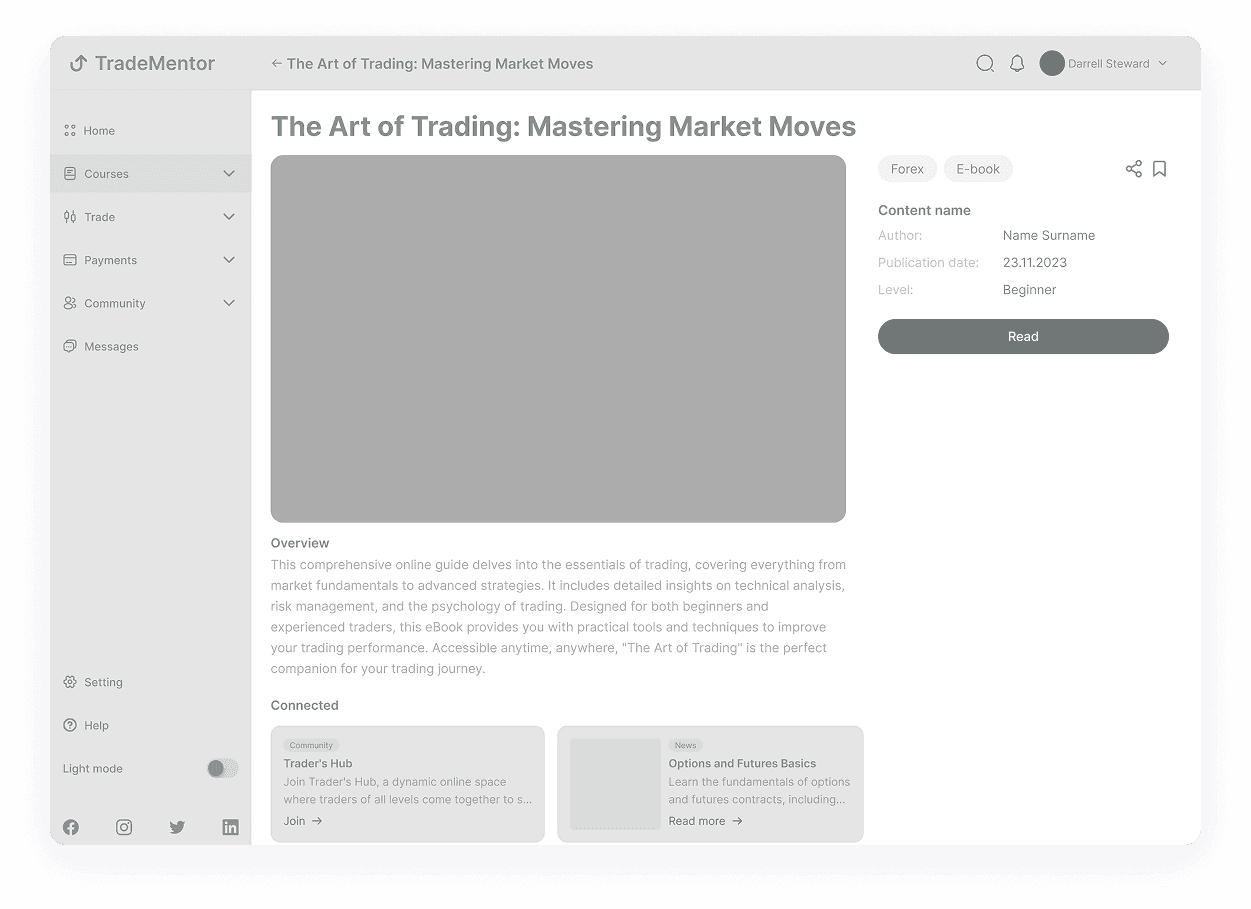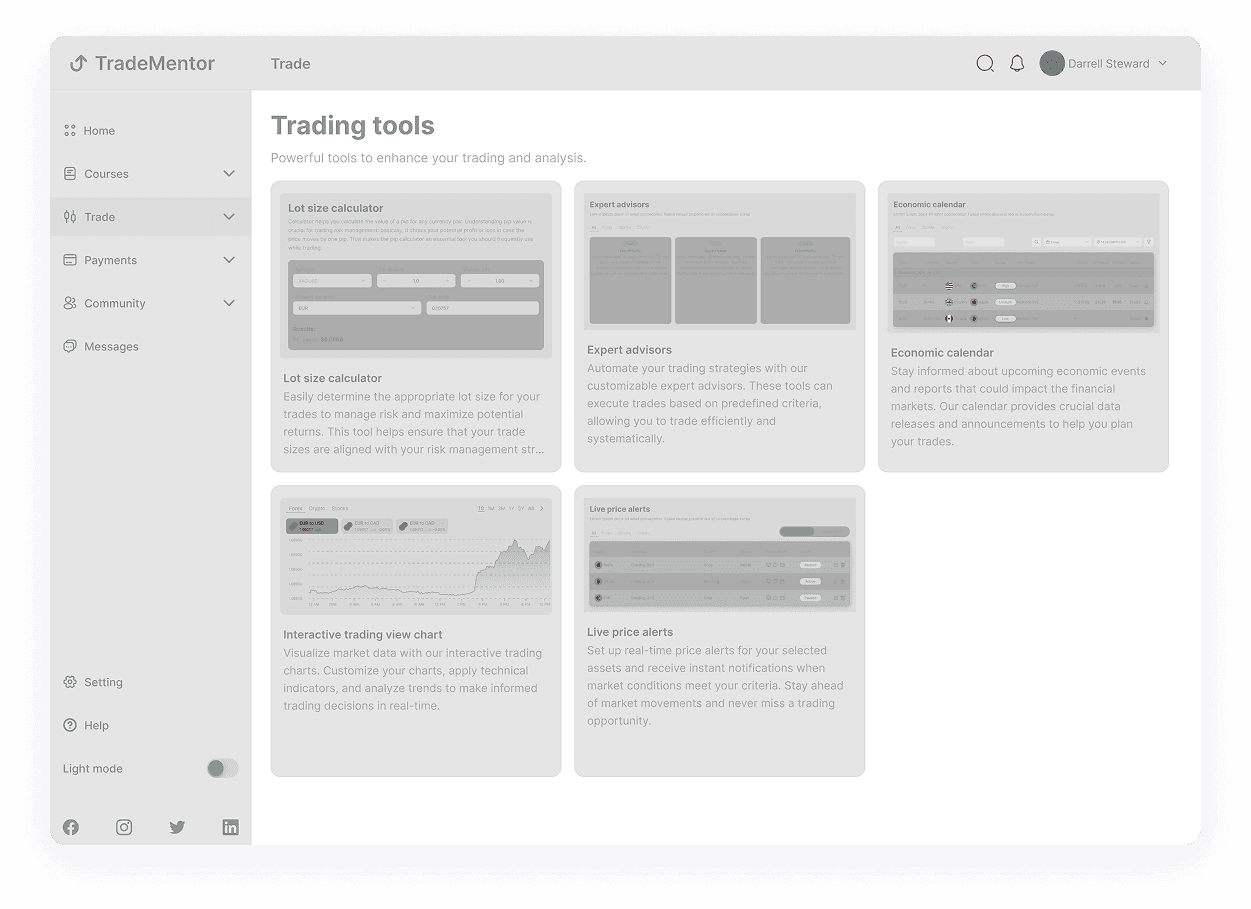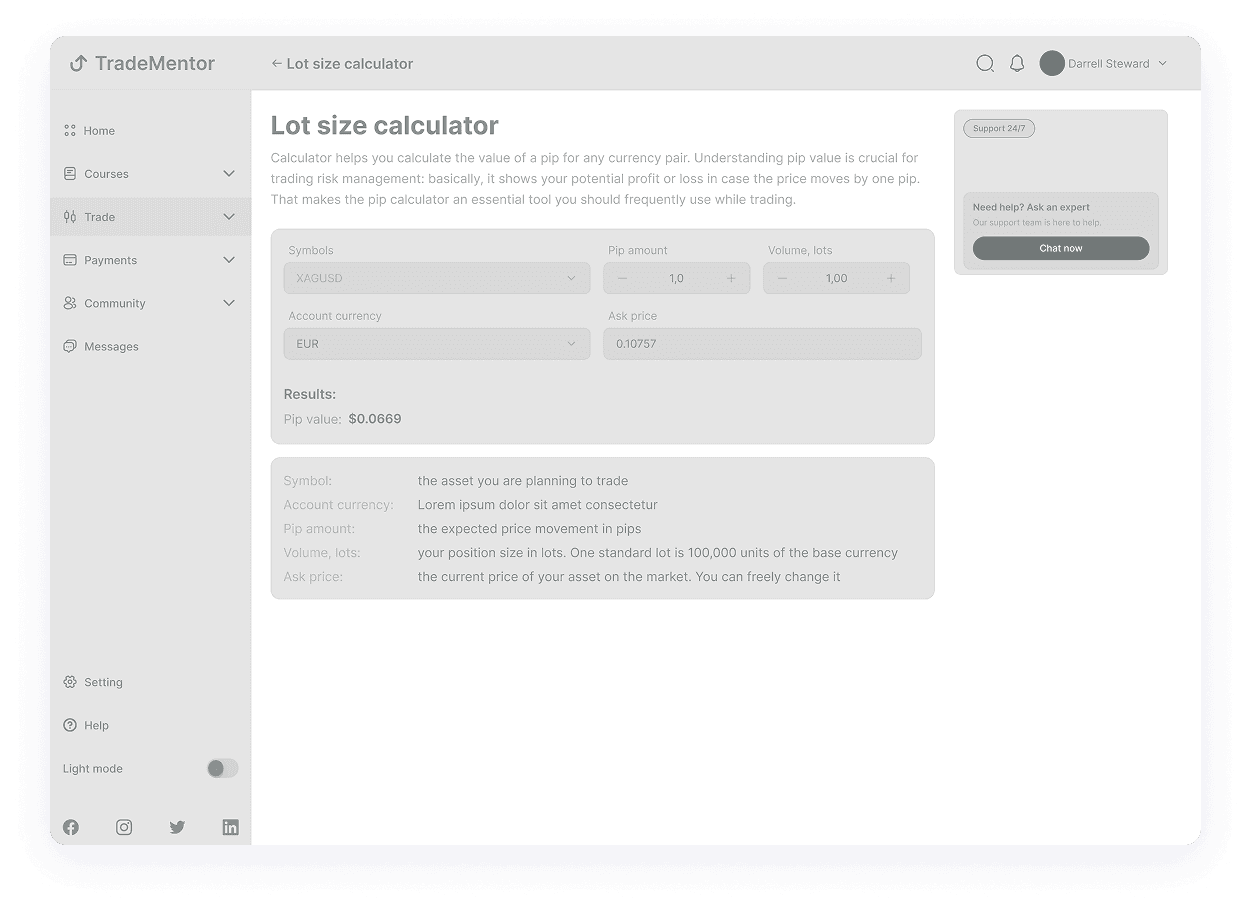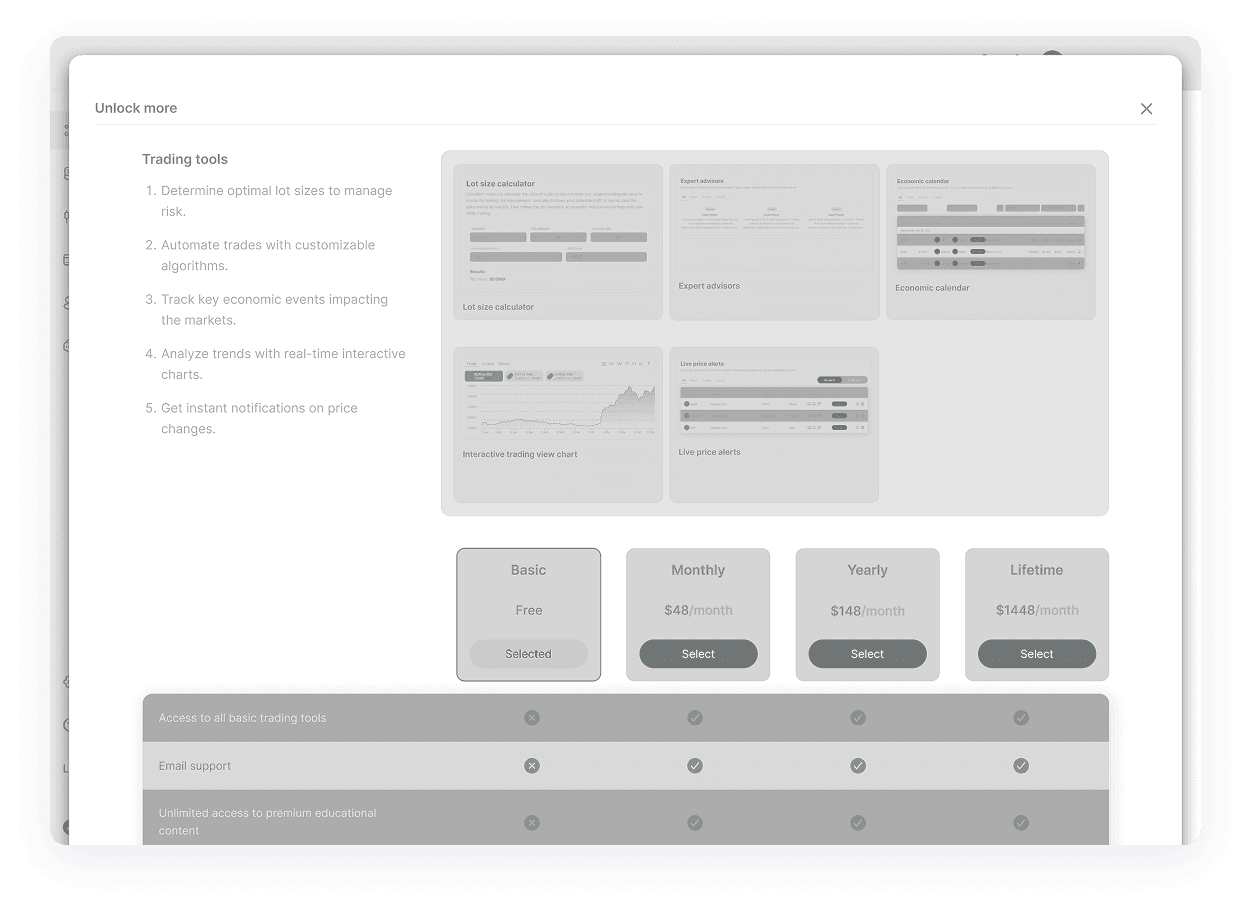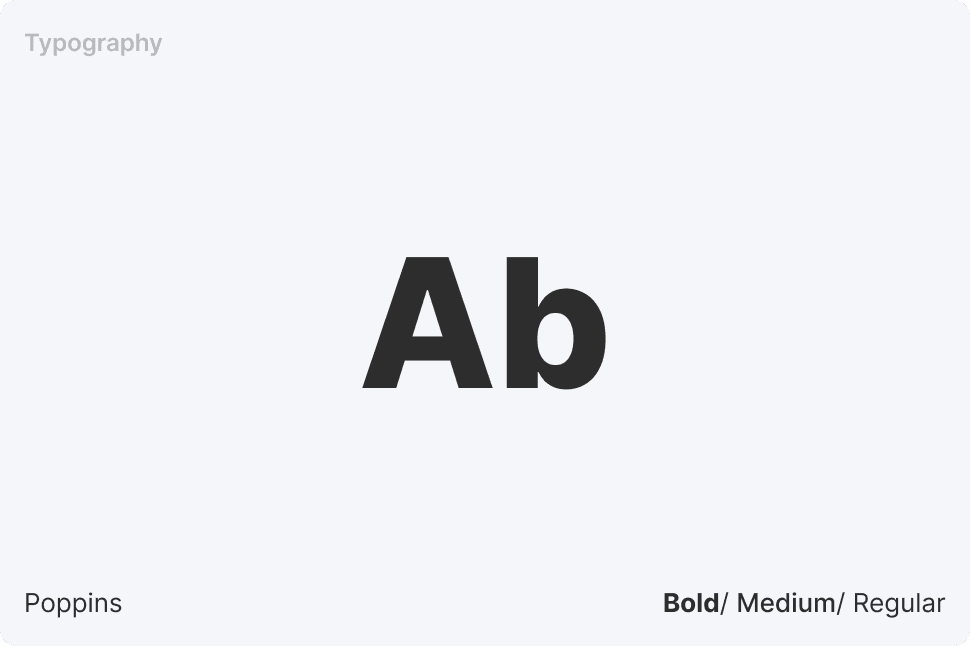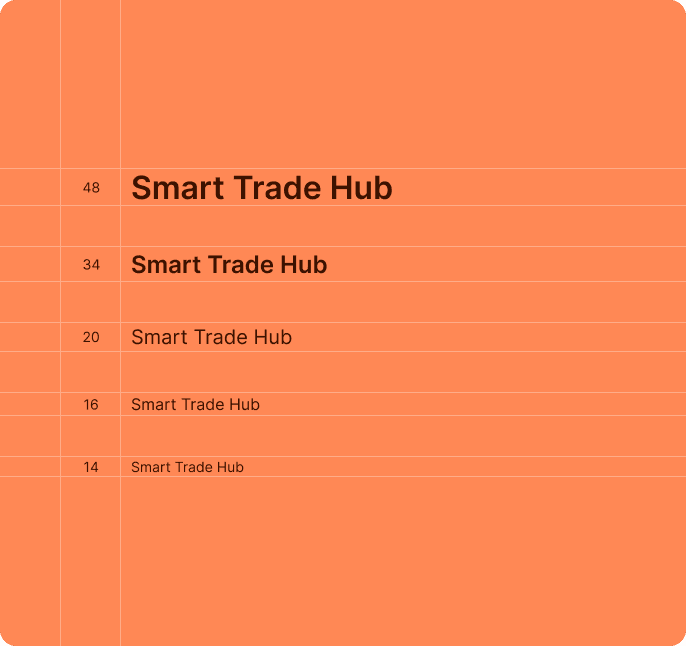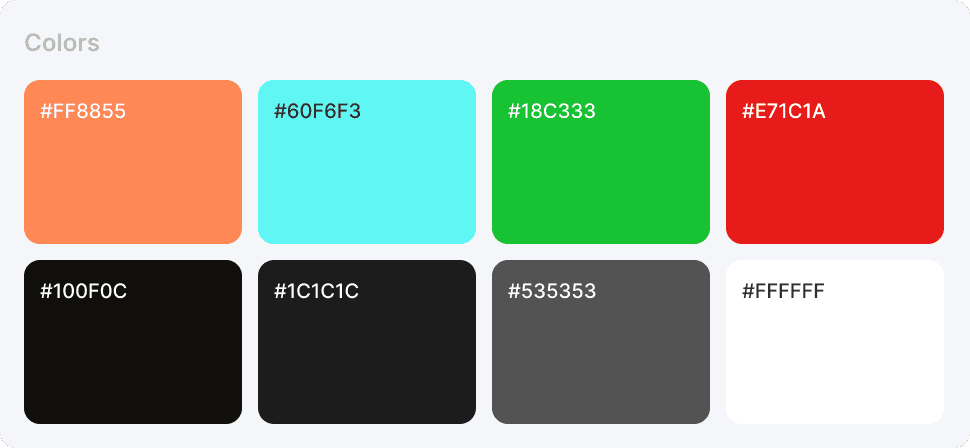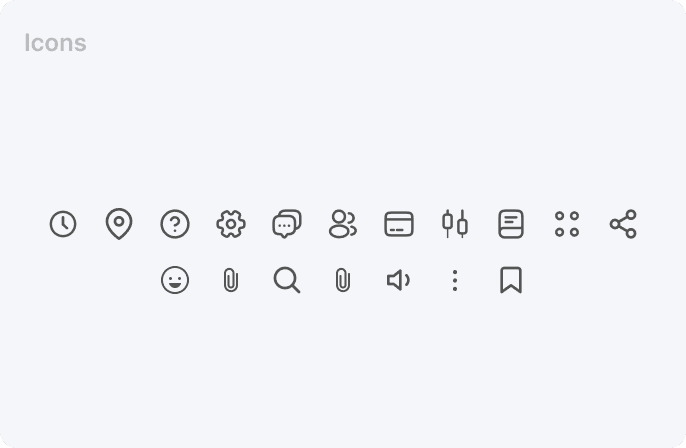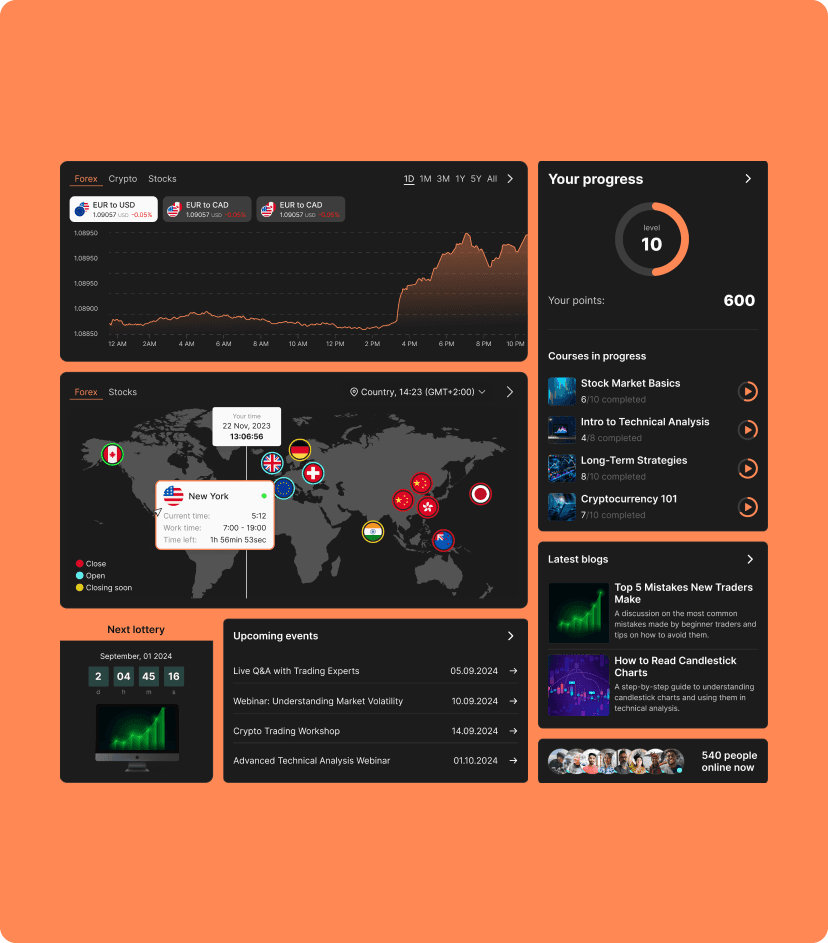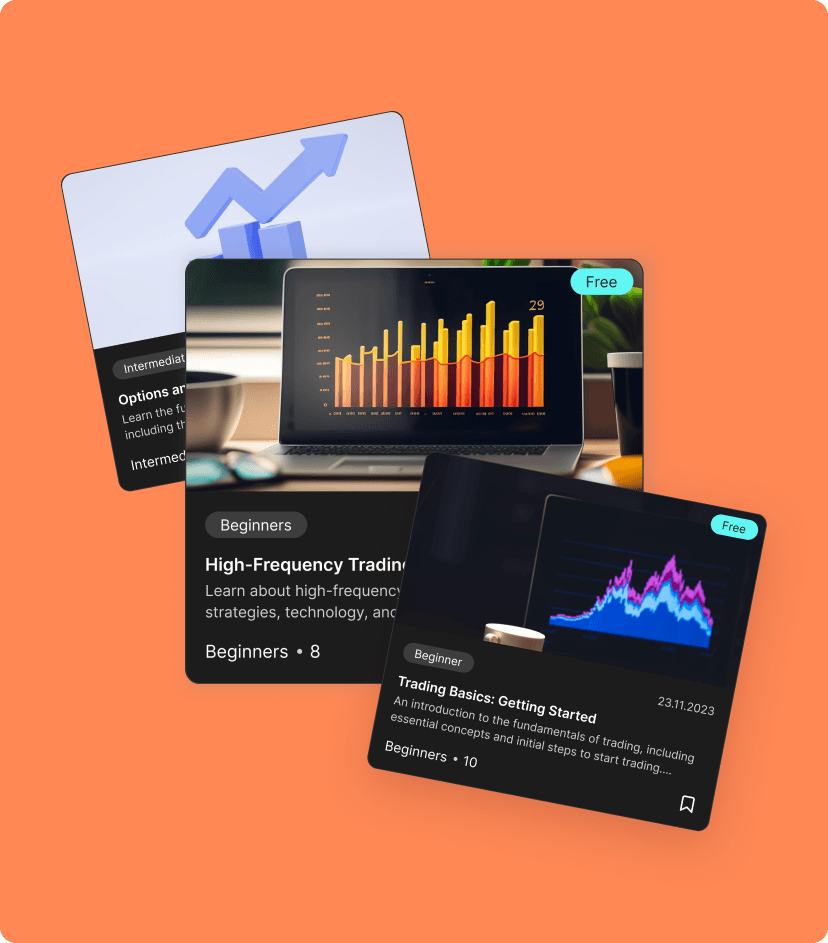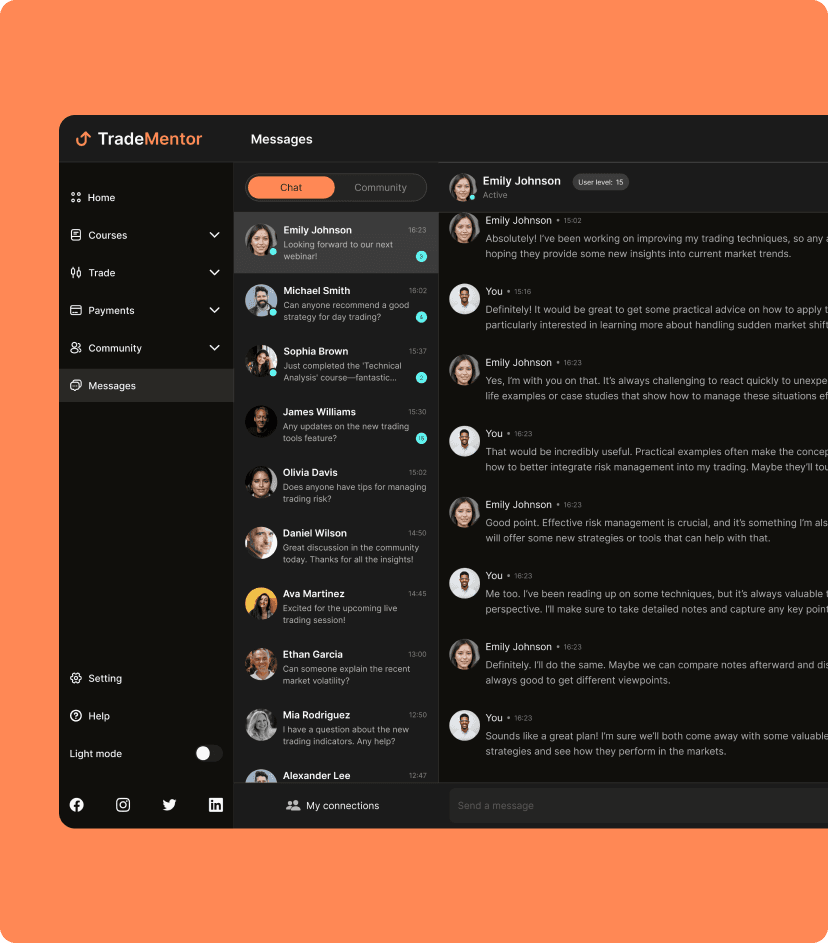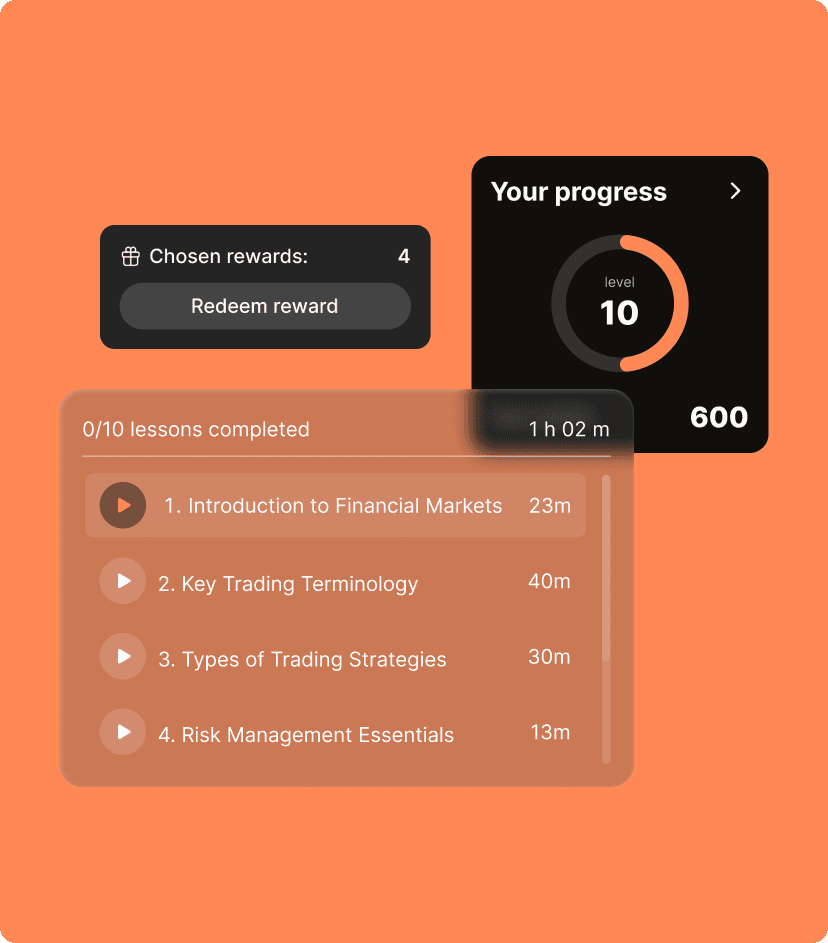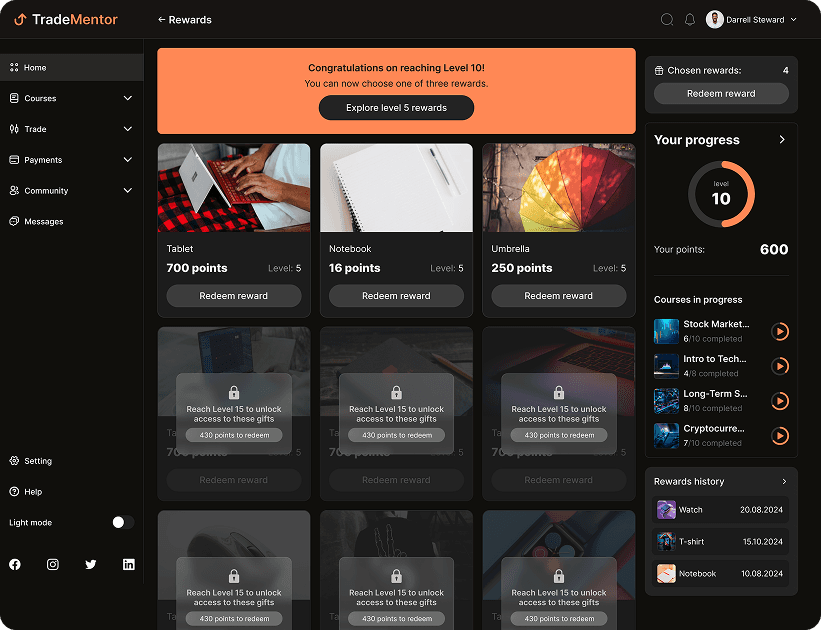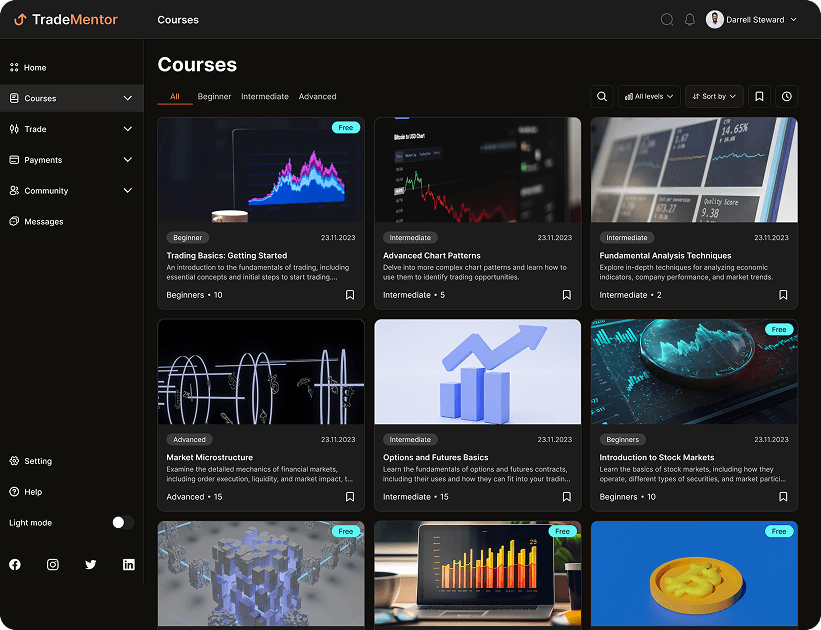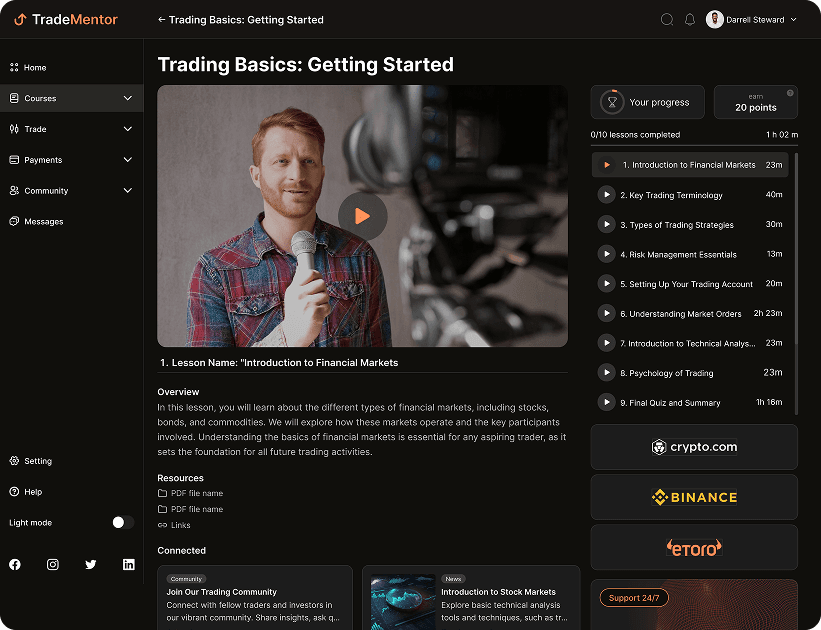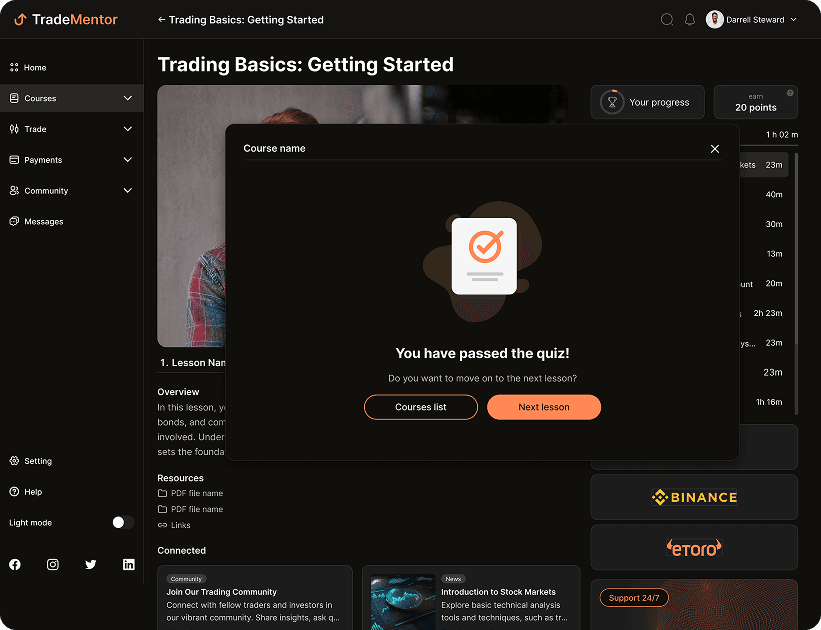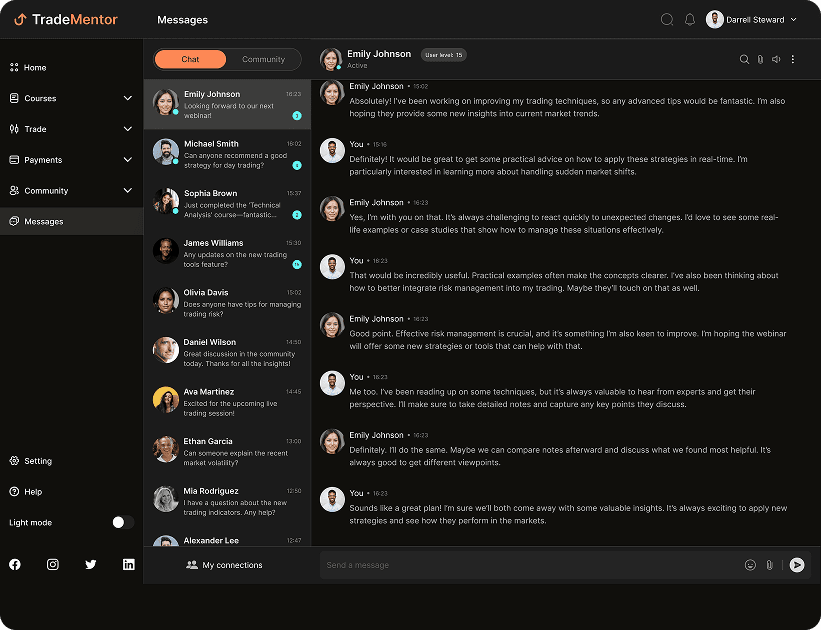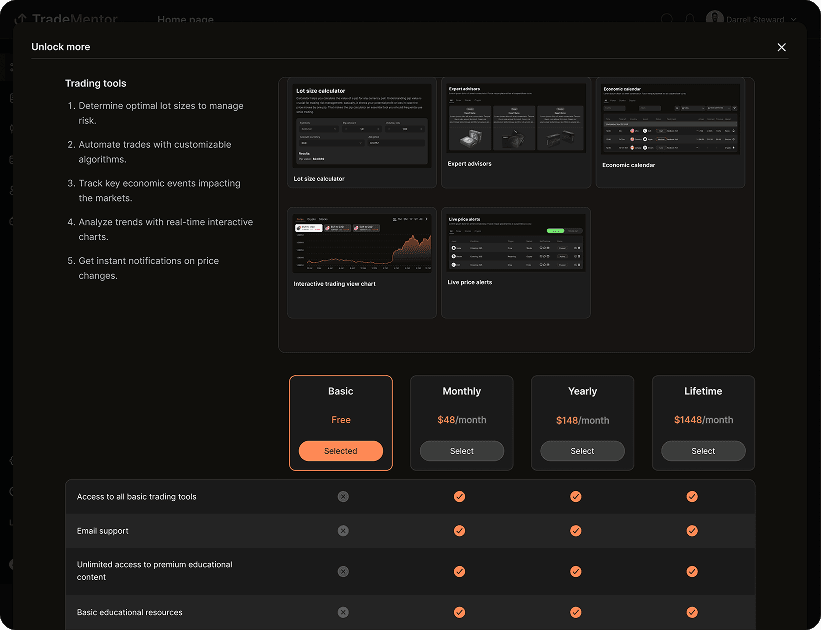
At the beginning of the design journey, our design team plunged into a meticulous analysis of the client’s goal and overall vision. Our specialists assessed the platform’s look and feel and brainstormed ways to improve its performance. We analyzed similar platforms and compared them to the TradeMentor management system to figure out what can work better for our client.

Based on our findings, we structured the platform’s core functionalities by developing detailed wireframes. These visual blueprints laid the groundwork for features such as portfolio tracking, real-time trading simulators, and educational content modules. The wireframes ensured a logical user flow, guiding learners seamlessly through tutorials, asset analysis, and performance dashboards.

Once the user experience was defined, we transitioned to designing interfaces with a strong focus on clarity and financial data presentation. The UI incorporates clean charts, intuitive trading indicators, and an aesthetically engaging color scheme inspired by real-world trading platforms. This stage brought visual consistency and a sense of credibility, reinforcing the platform's identity as a professional trading education tool.

Given the fast-paced nature of the financial markets, it was crucial that users could access TradeMentor from any device at any time. We implemented a responsive design approach that adapts seamlessly to various screen sizes, ensuring optimal usability across desktops, tablets, and mobile devices. Whether reviewing candlestick patterns on a desktop or checking crypto price updates on a smartphone, users receive a consistent and streamlined experience.

To validate our design decisions, we developed an interactive prototype replicating the user journey through core features like course selection, trade simulations, and performance tracking. This hands-on preview allowed the client to explore the platform’s interface as if it were live and provide actionable feedback. The prototype phase proved instrumental in refining the final product before development, reducing the risk of iteration delays post-launch.





